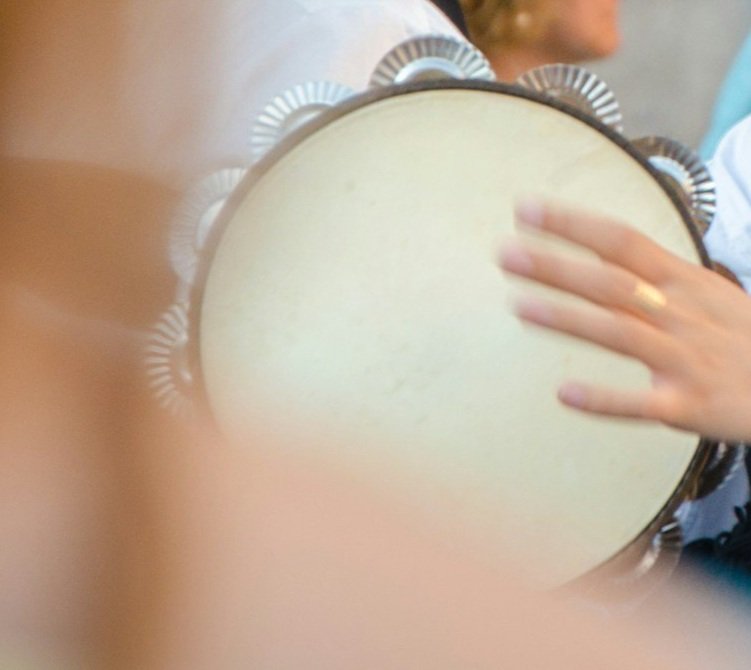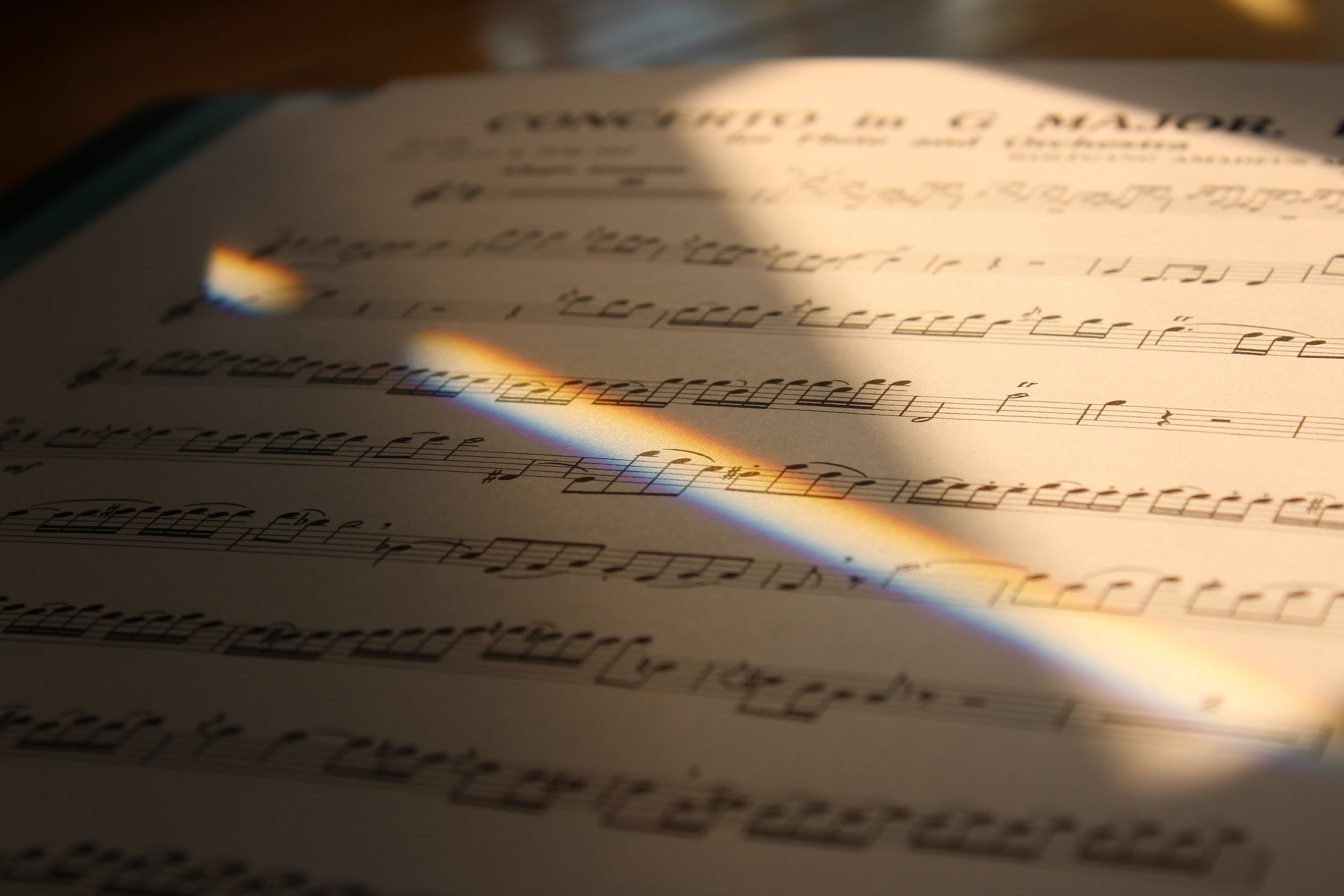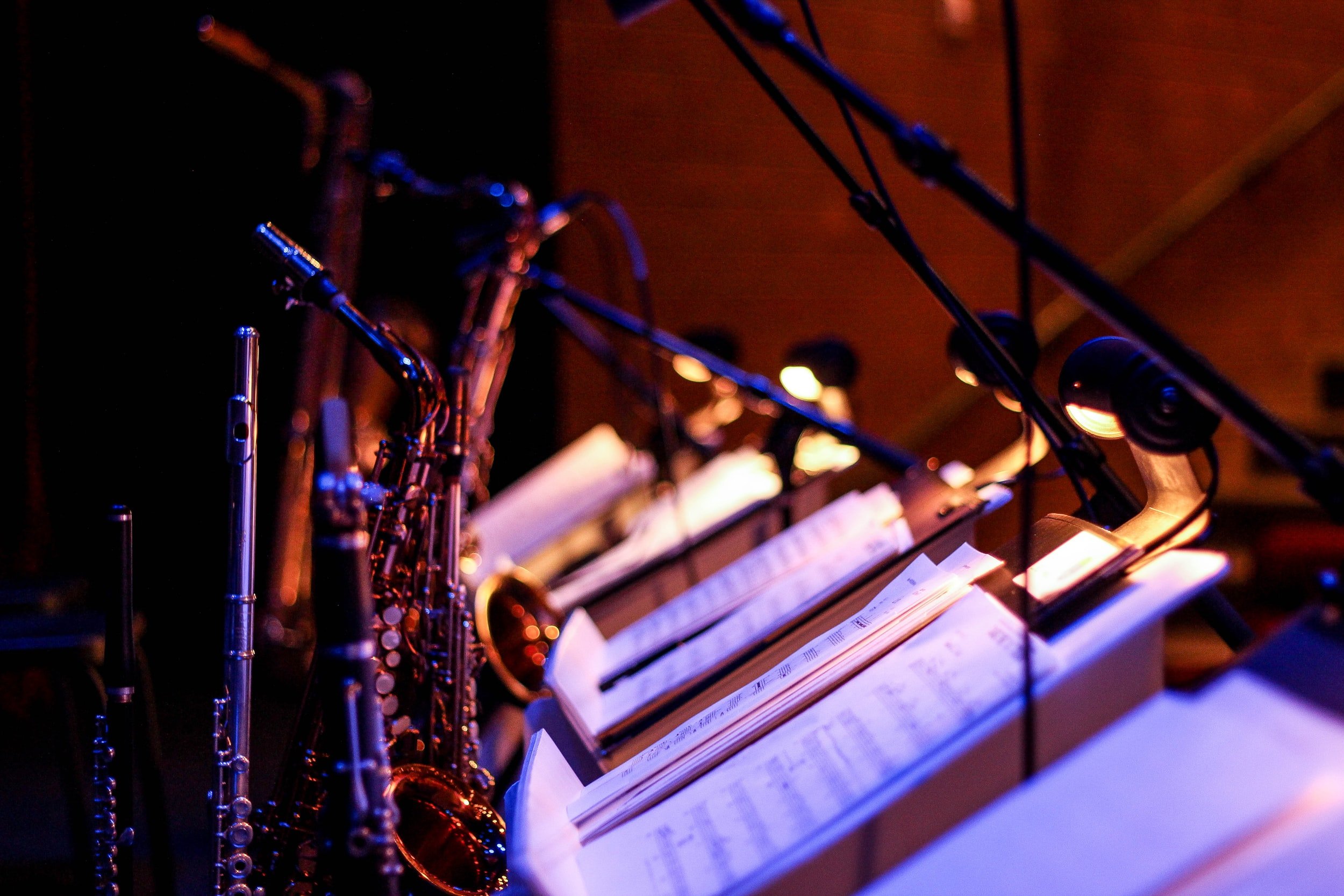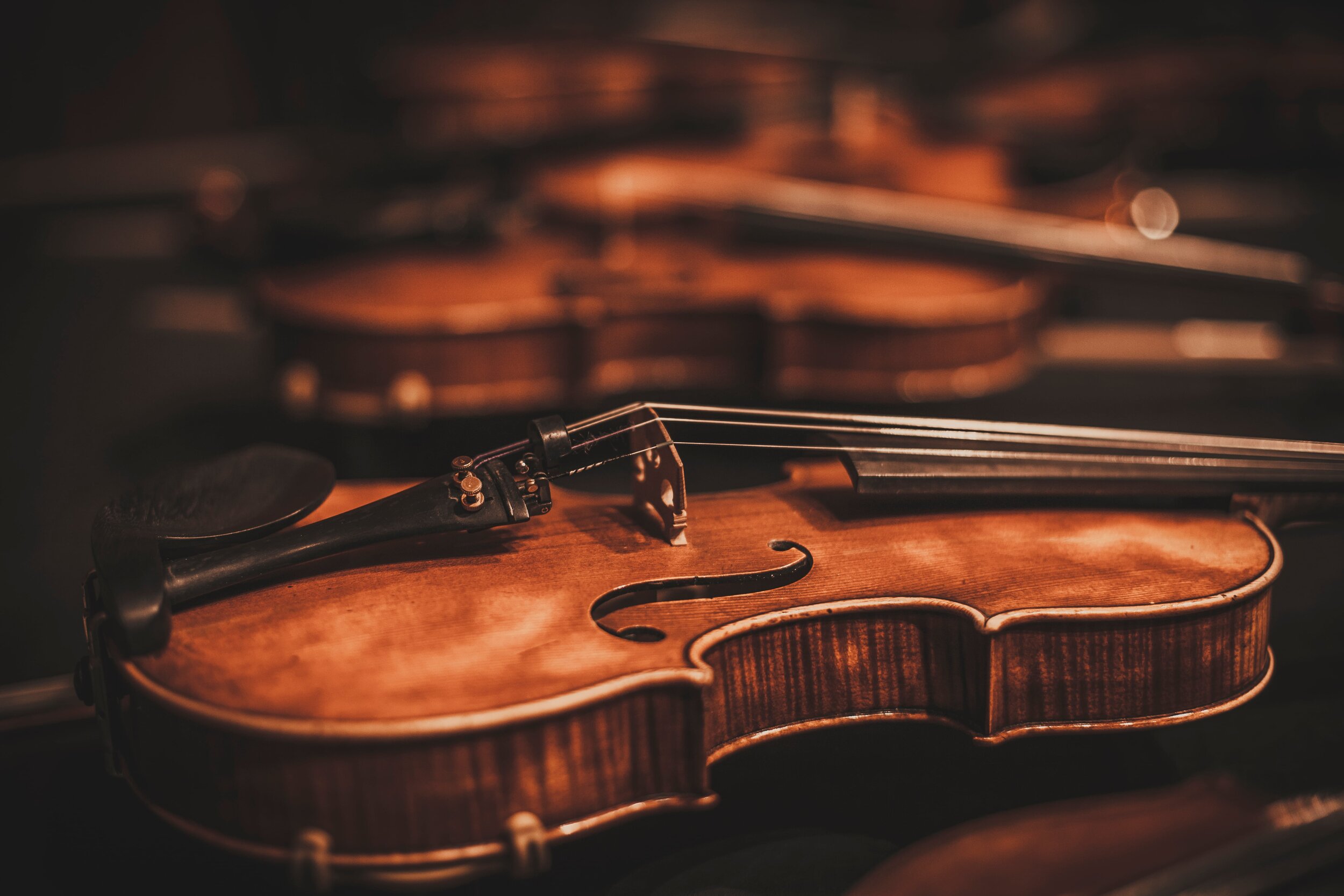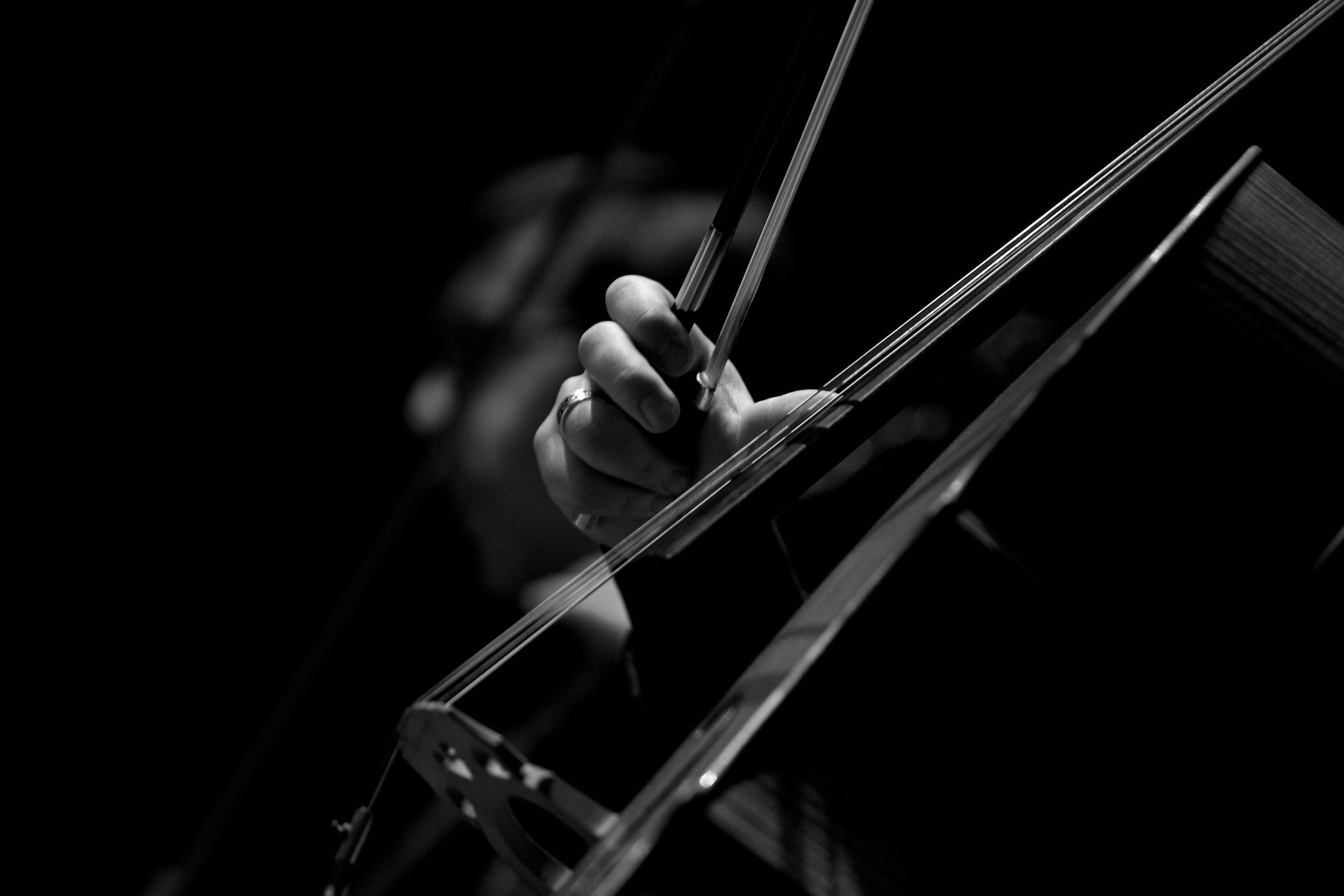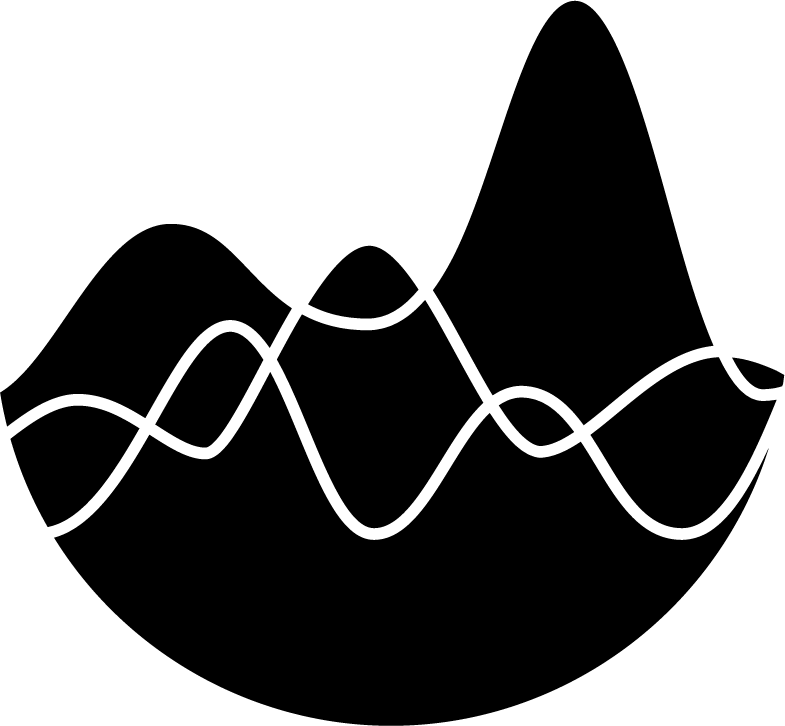Percussion | Drums
Snare Drums
Timpani
Drums
Tambourine
Conga Drums
Bongos
Most drums have a single head, made from a stretched membrane, affixed to a shell. Some have a second head on the opposing side (i.e. bass drum), adding resonance by creating a sound chamber between the heads. Though a majority of the drums are non-pitched, it is possible to adjust the “pitch” of all drums by tightening or loosening the head. Tightening the head makes the frequency rise and results in a crisper and brighter tone, while loosening it makes the lower and less focused (if loosened beyond a certain point, the timbre will become flabby).
The most common way to play drums is to strike the head with a stick or other beater, approximately halfway between the edge and the center. It is also possible to play the drum “near the edge” for a strident, brittle tone, or precisely “in the center” to produce a dark, blunt thud devoid of upper partials. To return to normal playing, write “ord.” It is also possible to drum “on the rim” or “on the shell” of a drum, for a sharp, dry attack, highlighting the sound of the material being struck. While rim playing can be effective on most rimmed drums, playing on the shell cam damage instruments, and should never be applied to timpani or expensive snare drums. Some drums are commonly played with fingers or hands. Drums that are too resonant may be “muted” by placing a piece of cloth on the head. Most commonly used on larger drumheads, but possible with snare and other smaller drums, this technique softens and darkens the tone of the instrument. It is also possible to muffle or damp a drum with the hand.
Flams, drags, ruffs, and several types of rolls are possible and common on most kinds of drums. Closed or buzz rolls, the default roll for orchestra and wind ensemble settings, are blurry, delivering a steady, sustained sound. Open or crush rolls, commonly used in marching bands, are clear and grainy. If the latter type is desired, write the word “crush” over the roll.
Timpani are the oldest pitched percussion instruments in the orchestra, and orchestral literature features timpani more than any other percussion instrument. Usually, sets of three to five drums are used, with larger drums producing lower pitches than smaller ones. A full set of five timpani, including the high piccolo timpani, extends up to about a two-octave range. It is not necessary to indicate the size of desired drums on a score, but be aware of the ranges available. Determine the number of drums needed in a piece, and space the required combinations of pitches so they are all possible with a standard set of timpani (for example, the drums could never be tuned to a set of five adjacent half steps). An enormous dynamic range, from an almost inaudible pianissimo to a ferocious fortissimo, capable of covering up an entire ensemble, is available.
A pivoting foot pedal controls the specific pitch of each drum by adjusting the tension of the head. By depressing the pedal, the head tightens and the pitch ascends, while raising it loosens the head and lowers the pitch. Though great advancements have been made in timpani technology, even fairly reliable drums often require slight fine-tuning due to factors such as the weather and humidity. To ensure in-tune pedal changes, it is advisable to leave at least five seconds for a timpanist to change the tuning of each drum. Skilled timpanists can effectively “tune-up” even during loud ensemble passages.
Early timpani parts were often restricted to tonics and dominants, but the sophistication of timpani writing has increased dramatically in the last hundred years. They often double slow moving bass lines, or at least highlight important pitches. Some composers have even written melodic passages for timpani. Rolls are quite common, effectively sustaining pedal tones. Though rolls are usually performed on a single drum, it is possible to tremolo between the pitches of two drums. Two drums may also be articulated simultaneously. When the two pitches are a small interval apart it is difficult to perceive the exact notes (best for loud booming effects), but intervals over a third will produce separate comprehensible pitches. To add power to a timpani hit or roll, double it with bass drum.
In professional orchestras timpanists are hired as specialists to do just one thing: play the timpani. Unlike the other percussionists, who are the busiest doublers of the ensemble, timpanists should not be asked to play any additional instruments. It is, however, possible to ask one of the other percussionists to play timpani. This consideration is less important when writing for pre-college (or even some college) ensembles.
Rolled and non-rolled timpani glissandos are possible by adjusting the pedal while playing. Glissandos may be rolled or unrolled, and the highest and lowest pitches of the gliss must be playable on the same drum, though it is possible to transfer a gliss to a neighboring drum. Unrolled downward glissandos should be avoided, since the sound will quickly disappear as the head loosens. Other special effects include muting the head with a cloth, striking the instrument dead center, playing the rim of the drum, bouncing coins on the head, or lightly tapping it with the fingertips. It is also possible to roll a cymbal or gong placed upside down on the head of the timpani while adjusting the foot pedal, producing a strange, ethereal tone highlighting changing overtones. Blowing a wind instrument directly into the head of a timpani activates the timpani’s resonant sound chamber, adding reverberation to the sound of the instrument.
Roto-toms are tuned, single headed drums that effectively extend the range of the timpani. By rotating the frame of the drum, the head can be tightened or loosened, changing the pitch. Any of the techniques available on timpani can easily be applied to roto toms besides rolled glissandos, since one hand is required to rotate the drum. Seven roto-toms are available, coming in 6, 8, 10, 12, 14, 16, and 18 inches. The highest three are mounted together, as are the middle two and the lowest two. Composers may ask for one, two, or all three of these sets. When one player must switch between timpani and roto toms, the music is usually notated on two staves, one for each set of instruments.
Instrument Studies for Eyes and Ears (ISFEE) | Mallet Percussion
The snare drum has a long and varied history, associated as much with the orchestra as it is with jazz, popular, military, and concert bands. A two-headed drum, it gets its name because a snare (several strands of wire, nylon, or cat gut) vibrates loosely against the bottom head giving the instrument its unique, brittle rattle. It is possible to turn the ‘snare off’ fairly quickly, resulting with a deeper tone, reminiscent of a tom-tom, cancelled out by the indication ‘snare on.’ Snare drums vary in size and depth. The thinnest drums, called piccolo snare drums, are quite bright and focused. Concert snare drums are about twice as deep, and are the default snare drums in orchestral settings. Field drums, more common to marching bands than orchestras, are deeper in size than concert snares, producing a somewhat fuller and less brittle timbre. There is actually no specific instrument called a tenor drum; it is simply a “snare drum” without snares, resulting in a deeper, blurrier, and more subdued tone, making it less optimal for quick, intricate passages. When tenor drum is specified, players often use a snare drum with snares off.
Snare drum parts are often fairly active, combining flams, drags, and ruffs. Extended rolls at any dynamic level can provide excitement—the saying “drum roll, please” to create anticipation before an announcement refers to a snare roll—and short rolls can be incorporated into moving patterns. A loud, special technique most common on snare, but possible on several drums, is called a rim shot. (This technique should not be performed on field drums because it can ruin the head.) A rim shot results in a very sharp attack, reminiscent of an earsplitting gunshot. Notated by writing “RS” over the pitch in question, it may be produced in one of two ways:
Position the tip of one stick in the middle of the head, the other end resting on the rim, and strike it with the other stick. It takes a second to prepare to play this kind of rim shot, but is the most common type.
Strike the rim and head of the drum simultaneously with a single stick. Because the stick must be positioned at a particular angle, this is slightly risky, but can be effective, especially when combined with normal attacks.
In addition to rim shots, snare drums are capable of many alternative timbres. Jazz and pop drummers often use a technique called rim clicks by positioning the drumstick tip on the head and clicking the other end against the rim. The thickness of the drumstick affects the heaviness of the timbre (to quickly switch to a heavier sound, players will sometimes flip the stick and play with the butt end instead of the tip end). By drumming close to the edge, a more focused sound emerges, while playing directly in the center deadens the tone. Wire brushes are commonly use to strike snare drums for a softer sound than sticks, though they can also be “swished” across the head. Yarn mallets create warm, mellow attacks, especially when combined with snare off. Snare drums can be muffled by placing a handkerchief on the head. Playing on the rim is possible and fairly common.
Snares make a rattling sound when set into motion. Though usually desired when playing the drum, vibrations from other instruments are also capable of activating the snares, creating an unwanted buzz. If this happens, simply turn off the snares and the noise will disappear.
The bass drum, and lowest orchestral drum, is capable of a surprisingly large array of sonic possibilities. Often used to emphasize single pitches, perhaps in combination with a more active snare drum part, the bass drum has a considerably longer sustain than smaller drums. A fortississimo bass drum hit has such power that it can drown out an orchestra, and writing at such loud levels should be used with caution. Rolls are powerful at louder dynamics and full of suspense when played softly, suggesting light, rumbling thunder in the distance. Bass drums can add power and depth to any moment, and are commonly combined with important timpani or tam-tam hits. More active passages requiring a denser mallet (perhaps wooden) are possible, though they will not have the clarity of a comparable snare part. Be specific about durations of bass drum notes, using staccatos for muffling and open ties or “l.v.” to ensure maximum sustain.
Tom-toms are usually single-headed drums. Though they are treated as non-pitched instruments, the “pitch” of a tom-tom is often more discernable than that of many other drums. They come in a variety of sizes, and are often played in sets of two to four or more. It is not necessary to specify the exact dimensions of tom-toms; instead, use designations like high, medium high, low, etc. Many orchestrators pair toms with the bass drum, treating the latter as the lowest drum in the set. The only problem with this combination is determining an appropriate beater that will be effective on all of the drums.
Timbales are Latin-American instruments with a focused and pointed sound. Popular mambo and salsa instruments, virtuosic timbalists have astounded audiences with their exhilarating improvised performances. By integrating them into orchestral or wind ensemble percussion sections, it is possible to offer an alternative drum or upward extension to the tom-toms. Mounted in sets of two, these single-headed drums are written as un-pitched instruments, though they usually have discernable pitches and are tuned approximately a perfect fourth apart. Timbale writing can easily take advantage of the many sounds possible on these drums: playing on the edge, in the center, on the rim, and rim shots. In addition, these are perhaps the best drums to strike on the shell. Alternations between various techniques are idiomatic and effective. Timbales are often combined with bongos and cymbals.
Two other Latin-American drums that are becoming increasingly common to the orchestral percussion section are bongos and congas. Bongos are higher pitched than congas, which should come as no surprise when contrasting the relatively small bongos with the quite long conga drums. Traditionally, a conga drum or set of bongos is positioned between the knees of a sitting player and struck with the hands. Skilled performers can perform amazing feats on these instruments at an incredibly fast pace, ad libing many contrasting timbres by striking various parts of the head and through hand muting techniques. Regular players develop thick callouses on their hands, allowing them to bang away to their heart’s content without the necessity for first aid.
Writing for non-specialists on bongos and congas is another story. When played with sticks or other beaters, they can be called on to perform any of the techniques possible on other drums. Be careful about writing loud dynamics with sticks for congas, as the drum can be damaged. Sticks should never be used on bongos with calf-skin heads. Non-specialists can also achieve a large variety of sounds with their hands, including rolls, muffled tones, playing by the edge, in the center, slaps, etc. But they should not be expected to “jam out” in the same way that those who have devoted their life solely to these instruments would. Complex patterns can require years of training, not to mention that extended hand playing can be excruciating.
Most often these instruments are mounted, and bongos and congas are often used in conjunction, or combined, with timbales. It is possible to be a bit less specific with the notation of bongo and conga writing. Players will automatically inflect pitches as they see appropriate. If one basic technique should be employed, general instructions over slash notation may suffice.
Tambourines are part drum, part cymbal. These single-headed frame drums are laced with several pairs of tiny metal cymbals suspended from the frame. Like other drums, hitting the head produces a drum sound, but unlike the others, this also causes metallic jingling. There are even tambourines that do not possess heads, called rock tambourines.
Tambourines may be mounted, set upon a trap table, or held in a hand; playing one on top of a drum or hi-hat creates an interesting sound combination. Though they may be struck with sticks, they are most often shaken or hit with a hand, finger, or knuckle. Extended repeated pattern soften suggesting Spanish, Middle Eastern, or other exotic influences, while a single “ching” can emphasize a particular moment. Rolls are common on the tambourine, and may be produced in several ways.
Finger/Hand/Beater Rolls. Normal rolls between two fingers, hands, or beaters. Indicate method of roll.
Shake Roll. Quickly shaking tambourine back and forth creates an excited, frenzied roll. Shake rolls may be at a single dynamic, or they can crescendo or diminuendo. Notated with a normal tremolo mark and the word “shake.”
Thumb Roll. Pressing and moving the thumb firmly against head of tambourine counterclockwise causes a tight roll. Loud thumb rolls can only last about a second or two, while softer ones can extend up to five seconds. Notated by combining the word “thumb” with a tremolo mark.
Instrument Studies for Eyes and Ears (ISFEE): These pages explore the techniques and timbres of the trombone, with scores synched to video recordings. Created by Don Freund, site designed by Reid Merzbacher. These links go to the ISFEE pages for:




